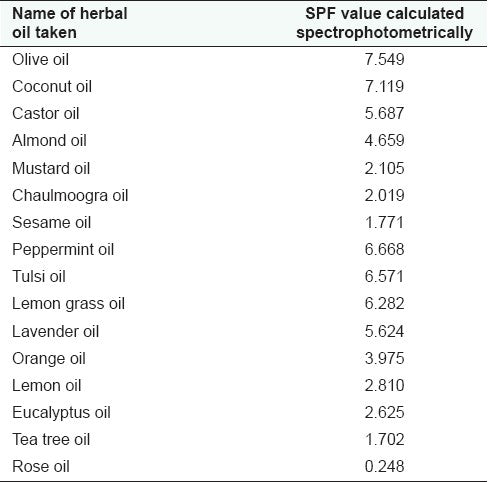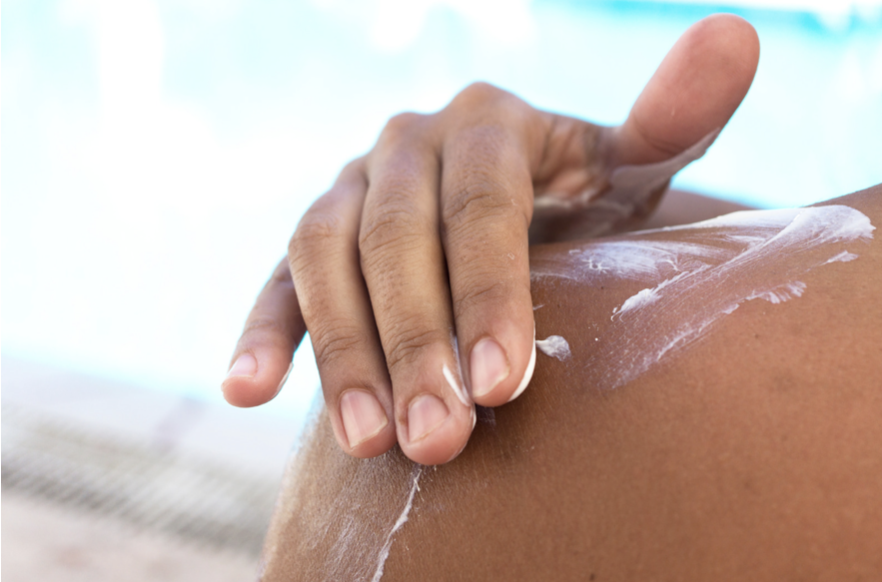Summer’s here, and with it a very strong sun.
Protection from the sun is important when you are exposed to UV rays for extended periods of time, but unfortunately, many products on the market are full of harmful chemicals that are damaging to both the environment and your body. We’ll explore the differences and types of UV damage, preventative measures, chemicals in sunscreen to avoid, and plant and mineral alternatives for safer sun protection.
Understanding SPF
If there is one thing you take away from this entire post, it should be this: SPF 50 and higher is barely different from SPF 30 in terms of skin protection – literally 1% of a difference! SPF is used to measure the time you can be in the sun.

If you are very fair skinned (light hair, light eyes, freckle easily), your unprotected sun time is likely 10 minutes. If you are mid-toned, 15 minutes. If you are naturally dark, your unprotected sun time is 20-25 minutes.
Example: If I am a very fair skinned person and I am using an SPF 30, I would calculate 10 x 30 = 300 minutes of sun exposure prior to needing to run for shade. Keep in mind: these are general guidelines that have been established in controlled environments (AKA: science labs), and do not account for water, sweat, and rubbing off. It’s likely that I should apply every 200 minutes or so, just to be safe.
Furthermore, SPF only measures the protection factor from UVB rays, not UVA.
Understanding UVA & UVB
UVB, the one that’s measured most on sunscreen bottles, actually isn’t the main cause behind melanoma (though it’s still a contributor); UVA is. UVA penetrates deeper, damaging your DNA (and causes more, and faster, skin aging). The physical redness you see is from UVB; but the melanoma that appears years later is from UVA.
Read More: Spring Tea Tonic Recipe & New Moon
Skin Cancer: why all these acronyms matter
Melanoma (skin cancer) is more common as we age, because as we get older, we get more immunosuppressed. It accounts for 1% of all skin cancer cases in the US;
In 2019, it is estimated that there will be 96,480 new cases of melanoma in the United States and 7,230 deaths from the disease.
Interestingly a lack of Vitamin D (yup, that thing you get from the sun) is heavily linked to all types of cancers (breast, prostate, ovarian, multiple myeloma, and more), and additional research has proven that Vitamin D as a supplement does not decrease cancer risk – only “authentic” Vitamin D that your body creates as a result of sun exposure can mitigate cancer risk.
So, what gives?
Well, as with anything (even water), too much of anything is never a good thing. If you don’t spend a lot of time outdoors, it’s likely that the sun exposure you get from walking outside and moving about your daily activities is sufficient. But if you find yourself in an office all day, it’s a good idea to step outside for some sunrays, just for 5-15 minutes (less time if you’re fair-skinned, more time if you’re darker). If you plan to be outside for any longer, reach for the sunscreen.
Understanding OTC & store-bought sunscreens
Most store-bought, readily-available sunscreens are either mineral or chemical (and sometimes a combination of both)
| Physical | Chemical |
| Active ingredients: nanoparticles of zinc & titanium oxide not yet known to cause cancers | Active ingredients: a variety of chemicals known to be carcinogenic and/or endocrine disruptors |
| Zinc & titanium do not degrade or in the sun at all | Sun degrades chemicals, breaking them down into free radicals |
| Inert metals are better for sensitive skin | Worse for easily irritated skin (especially rosacea and eczema). |
| Offers higher UVA (protection of collagen) protection than most chemical sunscreens | High protection against UVB, but limited UVA protection unless combined with mineral protection. |
| Requires 1 application, and works immediately | Requires reapplication every 30-90 minutes (depending on SPF strength), and must be applied 15-20 minutes prior to sun exposure in order to work. |
The issue with chemical-based sunscreens…
First, let’s note the issue with aerosol-canned sunscreen – the kind often marketed as “cooling” – why do you think they’re in a can? Because they literally eat through plastic (in addition to harmful additives necessary for propellant).
Moving onto the ingredients themselves, we like to think of sunscreen, like all skin, food, and even cleaning products, to be “safe enough to eat” (not that you would, but, remember your skin is the largest, and one of the most absorbent organs in your body – so what you’re putting on it can be considered what your skin is “eating”)
OTC chemical sunscreens may contain one, many, or all of the following ingredients:
Oxybenzone: an endocrine disruptor that acts as estrogen
- Increased risks and rate of melanoma
- Deteriorates cells
Avobenzone: degrades in the sun, which releases free radicals; recently has been banned as an ingredient in sunscreens
Parabens: used as a preservatives and have been linked to:
- Sterility; infertility
- Obesity
- Asthma
- Allergies
- Benign uterus tumors
- Breast cancer
Fragrance: this word spells DANGER! Behind it lies up to 1500 toxic chemicals, including, potentially, petroleum.
- The FDA allows companies to use the word “fragrance” to hide their proprietary brand of chemicals”
- Fragrance will almost always have phthalates (another endocrine disruptor) – unless the bottle specifically says “phthalate-free”
Propylene glycol: used a solvent in everything from ingestible food and pharmaceuticals to topical treatments such as creams and serums, it’s the same ingredient used as antifreeze. Excessive exposure has been linked to central nervous system depression and seizures.
Think about this…
1 full body application of sunscreen has as much estrogen in it as daily hormone replacement therapy.
And when it washes off in the shower… it goes into your water system, which cannot be filtered by even the best filters in the world.
Most readily available sunscreens are full of carcinogens. Why do you think you have to reapply chemical sunscreen every 2-3 hours? Because your body absorbs most of it, so all those carcinogens enter your bloodstream, going straight to the liver, which bears the (difficult) burden of processing them.
What can I do instead?
Physical mineral sunscreen sounds better, right? Though it’s likely significantly better than chemical sunscreens, the use of micro-fine titanium dioxide and zinc oxide as sunscreen has no long-term safety data as of yet.
Plant Protection
Most plants spend all day in the sun with minimal to no damage. Is it possible that using plants could offer us the same benefits? We already know of plants and herbs (green tea, black tea, aloe) that provide excellent after-sun treatment, but what about plants and herbs that can prevent sun damage?
TOP CHOICES for plant-based sun protection
Raspberry seed oil: this antioxidant-rich oil provides UVB SPF 28-30 + UVA SPF 8
Wheatgerm oil: SPF 20
Avocado oil: SPF 5-15, depending on “virginity” of oil (much like olive oil, avocado oil loses its benefits as you progress from the first press)
Note: carrot seed oil (NOT carrot seed essential oil) has been reported by a 2009 study to have an SPF of 38-40, while a 2019 study has it clocking in at only SPF 7, so it may not be the sun protecting superpower that many believe. But, it does offer the benefit of being antiseptic, so it’s definitely a great option for sticky, sweaty summer days.
Honorable mentions with SPF lower than 10:

Does mixing multiple oils increase SPF?
No – it’s not like you can add coconut oil (SPF 7.12) + castor oil (SPF 5.68) to get an SPF of 12.8; you’ll simply get the SPF of the highest value (in this case, 7.12).
You must also keep in mind that essential oils cannot be used in the same concentration as your carrier oils (raspberry seed, carrot seed, coconut, avocado, jojoba, almond, olive); you always want your essential oils at a 2% dilution within their carrier formula or oil.
Physical Protection
The best, and safest for you skin and body, protection from the sun are physical barriers and shade; wear a hat to protect your face, and wear clothing with UPF (ultraviolet protection factor).
Plain, organic white cotton and linen textiles naturally contain UPF/SPF of 20, while hemp offers UPF 15, and nettle UPF 17.
Natural plant dye (madder root, cochineal, and indigo) applied to these natural fabrics has shown to increase the UPF, increasing, specifically, protection against UVA rays (the bad ones) by up to 40% ! Of course, protection depends on the weave of the fabric being dyed as well as the plant used for dyeing, but the research for plant dye as UPF in natural fabrics in place of synthetic (and potentially carcinogenic) coatings for increased UPF is promising.
With natural UPF, you can literally wear your medicine and sun protection.
